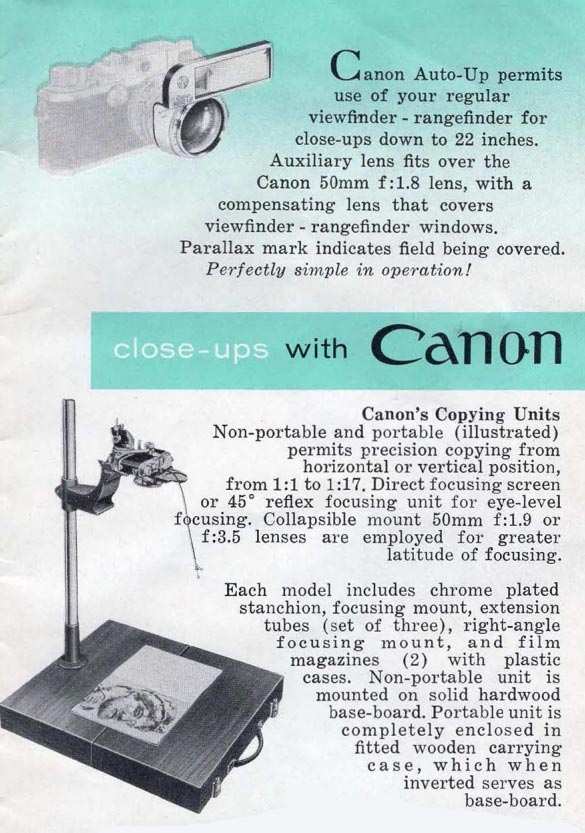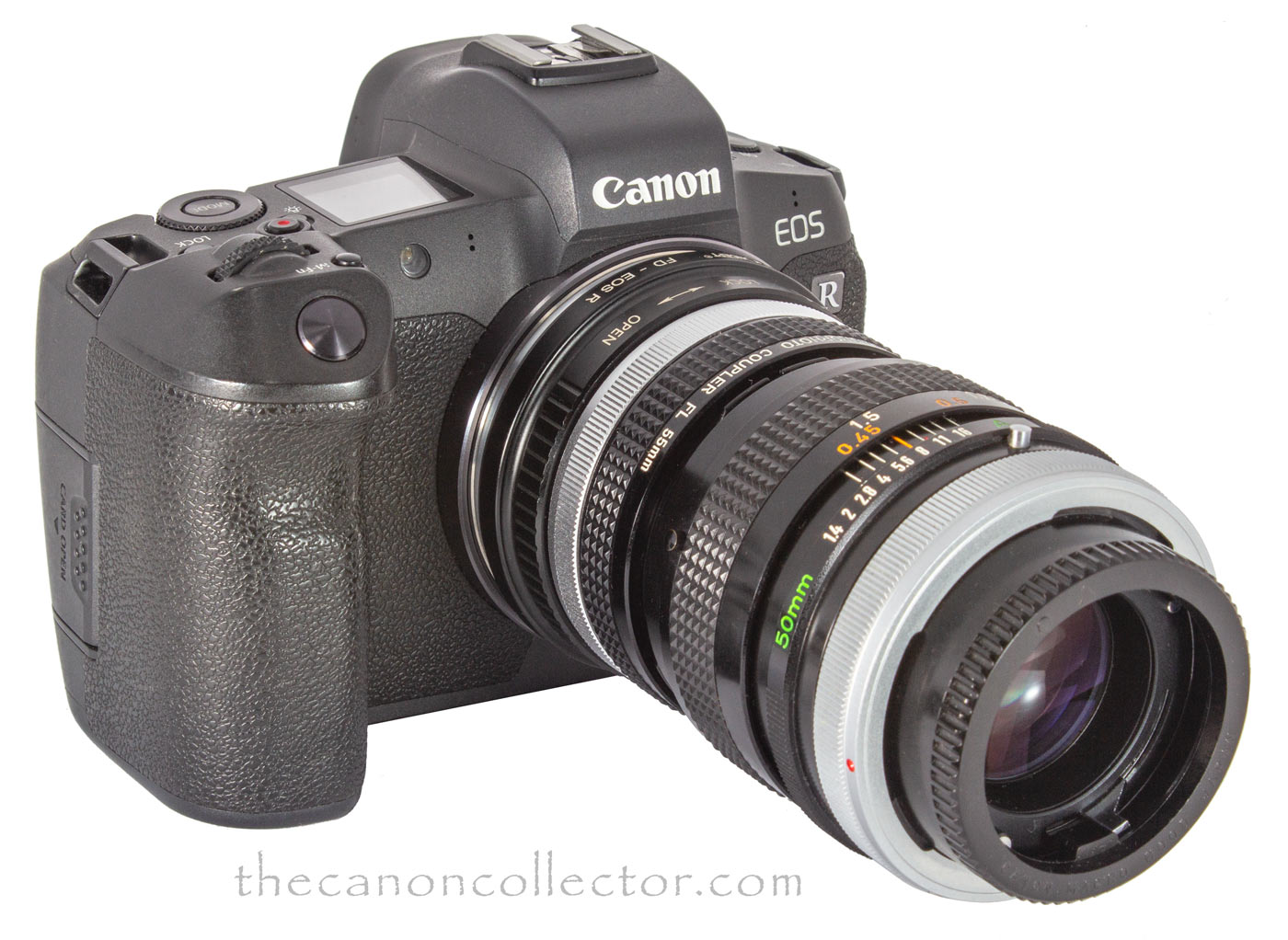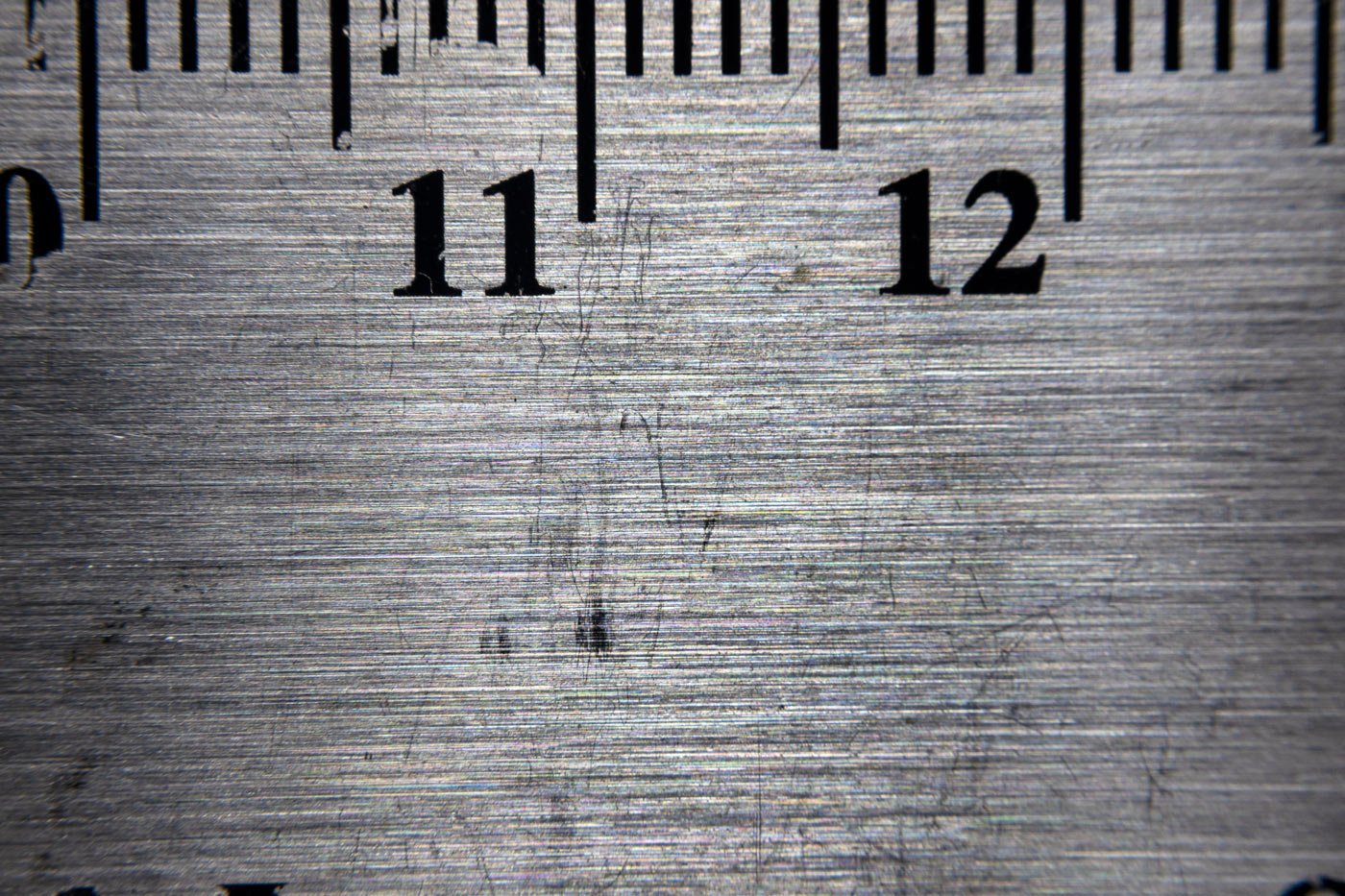This Macrophoto Coupler FL was introduced for the F Series cameras but can be used on any of the manual focus SLR’s.
Macrophoto Couplers
Macrophoto couplers are devices for attaching lenses to extension tubes or bellows
for macro photography. There are
definitions galore out there but
here Macro Photography is just
close up photography: real close.
Learning about these devices has
not been simple. I have been looking
for information about them but I
have found little on the internet
and early examples seem to be scarce on
E-bay. However, I will write down what I
have found and show pictures of the two Macrophoto Couplers that I have.
But First, Put it on Backwards!
Before we get into the Couplers lets talk a little optical theory. Well, in the simplest of
terms because I don’t really understand the thinking here. From what I read normal lenses are designed to give the best images when the scene in front of the camera is several feet and more away and at varying distances while the image is focused in the film plane only a few millimeters from the back of the lens.
When the lens is brought up to a few centimeters from the front element of the lens the situation is one not designed for and the resulting image degrades. How much and how it looks I don’t know. There are two answers to this problem. The first is to design the lens from the ground up as a macro lens knowing that the subject and image on the film will both be at very close distances to the lens. And this is what is done in the design of true Macro Lenses. I don’t mean lenses that allow a normal lens to travel further out from the film plane. Yes, that allows the lens to focus closer but it is not a true Macro design.
But what of using regular lenses for close up work? That brings us to the Macrophoto Coupler. Apparently if you take your normal lens and turn it around so the rear element points towards the subject the image is much improved. This is because a normal lens is designed to have the rear element close to the film plane. Turn the lens around and the best results will be if the subject is the same distance from the rear element, which is now facing towards the subject.
Subject to what I say below, the Macrophoto Coupler is a device to attach a lens backwards to the camera or bellows or extension tubes. With that in mind, lets have a look at what Canon came up with.
A page from the very early “Canon Means Versatility” Brochure which discusses early close-up photography.
The Rangefinder Cameras
Closeup photography with a rangefinder camera is tough! The viewfinder and rangefinder are of no use and “Through the Lens” photography lies in the future.
To move the camera closer to the subject Canon introduced the Auto-Up attachement but this only got the camera within around 22 inches of the item being photographed.
To get closer meant working in the dark. One had to use close-up lenses, bellows or extension tubes, measure the distance to the subject and obtain focus settings from tables supplied by Canon for their equipment. And all the while one could not see the image as it would appear on the film. You relied on carefull measurements and trial and error.
In the Canon Brochure “Canon Means Versitility” from the 1950’s there is a discussion of Canon “Copying Units” and reference is made to these units coming
A page from the 1956 brochure “Canon System of Photography” making the first refereence I can find to the Macrophoto Coupler.
with a set of three extension tubes. No more information than that is given.
The first reference I can find to Macrophoto Couplers is in a 1956 brochure printed in the United States entitled “Canon System of Photography” on page 27. It makes reference to the three extension tubes for copy stands but labels them “A”, “B” and “C”. Their lengths are given as 6, 9 and 12 millimeters respectively. Then we are introduced to 6 extension tubes from 25 to 200 millimeters in length and finally to the Couplers.
Two Macrophoto Couplers are listed, one for the 50mm f/3.5 and 50mm f/2.8 lenses and the other for the 50mm f/1.9, the 50mm f/1.8 and 50mm f/1.5 lenses. Again, no further information is given. I have never seen any of these things and I cannot find good photographs of them to see how they work and if the lenses can be reversed.
However, in the Canon Products Guide circa 1963 at page 38 it does say that all four Macrophoto Couplers are for coupling the lens reversed onto the extension tubes.
In the 1962 B&H/Canon Catalogue at Page 10 we find 3 Macrophoto Couplers listed as accessories to the Model 7 which are stated to be used “to couple lens to Macro Photo Extension Tubes.” They are the 55mm for the 50mm f/1.2 lens, the 48mm for the 50mm f/1.4 lens and the 40mm for the 50mm f/1.8 lens. These lenses are presumably the latest M-39 rangefinder lenses. Further, the way they are named suggests that the lenses are intended to be mounted by the filter rings, backwards.
In the same catalogue the Canonflex is listed with its accessories. On page 12 are listed the Lens Mount Converter A and the Lens Mount Converter B. Converter A allows use of M-39 lenses on the R mount of the Canonflex (will not focus to infinity). Converter B allows R lenses to mount on an M-39 lens mount. With these the macro attachments of the rangefinder cameras will work on the Canonflex, I assume.
Then on Page 20 is listed the Macrophoto Coupler 58mm for the Canomatic 50mm f/1.8 lens. With the arrival of the Canomatic and all of the available macro accessories macro photography was at last a thing. And, bye the bye, the catalogue also lists the Bellows R which came out with the Canonflex.
So, let’s summarize to this point:
| Macro Photo Extension Tube 25mm | S (M-39) Mount |
| Macro Photo Extension Tube 50mm | S (M-39) Mount |
| Macro Photo Extension Tube 75mm | S (M-39) Mount |
| Macro Photo Extension Tube 100mm | S (M-39) Mount |
| Macro Photo Extension Tube 150mm | S (M-39) Mount |
| Macro Photo Extension Tube 200mm | S (M-39) Mount |
| Extension Tubes A (6mm), B (9mm), C (12mm) (Set of 3 came with Canon Copy Unit) |
S (M-39) Mount |
| Lens Mount Converter A | S (M-39) Lenses to R Mount |
| Lens Mount Converter B | R Lenses to S (M-39) Mount |
| Macrophoto Coupler 40mm | S50mm f/1.8 |
| Macrophoto Coupler 48mm | S50mm f/1.4 |
| Macrophoto Coupler 55mm | S50mm f/1.2 |
| Macrophoto Coupler 58mm | R50mm f/1.8 |
This is my rather beat up FTb (but it all works including the light meter). Mounted on it, from the camera mount and going to the right, an FL Macrophoto Coupler, a reversed 50mm f/1.4 S.S.C. lens and finally a Macro Hood that comes with the Coupler.
FL Macrophoto Couplers
With the F Series cameras, beginning with the FX in 1964, macro photography
matured. Although the older accessories would still work with the right
adapters Canon came out with a series of dedicated Macrophoto
Couplers for the FL and FD mounts. These were the Macrophoto
Coupler 48, Macrophoto Coupler 52, Macrophoto Coupler 55,
and Macrophoto Coupler 58. These couplers mounted the
lens backwards, with the rear element pointing forward,
and the number in the name is the filter thread diameter
on the lens.
When using the Macrophoto Coupler with an R, FL or FD
lens the back of the lens is pointing forward exposing the
aperture levers. Another problem is setting the aperture
because the lens thinks it is not on a camera and these lenses
are notorious for not moving the iris if they are not mounted
on a camera.
These problems are dealt with by the Macro Hood that is sold
with the coupler. It is basically a rear lens cap with the top cut
out. It fits on the back of the lens in the usual manner thus
covering the levers and telling the lens that it is mounted on a camera. A simple and effective solution. And it serves as a lens hood as well. Bonus!
The Macrophoto Coupler moves the lens away from the camera body so, even when used alone, the macro magnification is substantial. At the same time as these Couplers were introduced Canon also brought to market two FL Extension Couplers, FL 15 and FL 25. The first reference I find for them is in the Canon FX Instruction Manual at Page 46. These can be used with the Couplers for even greater magnification. They can also be used with various Canon Bellows.
The Macrophoto Coupler FL 55 and the Macro Hood as they come out of the Canon box. You can see the Hood is just a rear lens cap with the top cut out. Notice tab on the inner edge. That engages the aperture lever on the lens allowing the aperture to be set manually.
The Macro Hood often gets lost and we see Macrophoto Couplers for sale without them. But they are important and a really useful part of the kit.
The FL Macrophoto Coupler has a focus range. Here it is shown with the lens at minimum distance to the film plane.
As you can see in the photos above, the FL Macrophoto Couplers do have an ability to move the lens fore and aft about 13 mm which does allow for some focusing. When using this feature the whole lens does rotate which may or may not be a problem. And of course the lens itself offers some focusing ability.
And finally, there is one more device I should mention for macro photography that mounts the lens reversed. That is the Canon Auto Bellows. This is not a Macrophoto Coupler but it does serve the same purpose. I won’t go into details here but instructions on how to accomplish this are found in the Auto Bellows Instruction Manual at page 24.
And there you have it: all I have found out about Macrophoto Couplers. Probably more than you wanted to know.
This is my Canon R with an FD to R lens converter. Mounted to that is a Macrophoto Coupler with an FD 50mm f/1.4 S.S.C. lens and Macro Hood
But Wait, There’s More!
I shoot digital with a Canon R, their first full frame mirrorless camera. It is one of the latest digital cameras on the market. For a number of reasons the macro photography gear from the 1960’s and 70’s can be used to great effect with these modern cameras.
It has to deal with flange distance. Because there is no mirror
to bump into the back of the lens the distance from lens
to sensor in a modern mirrorless camera is
substantially reduced. And as long as the flange
distance for the lens mount is less than that for any
lens that lens can be used on the camera with an
appropriate adapter and still focus to infinity.
In the image on the left I have mounted my FD
to R Adapter to my Canon R. That effectively
means I now have a camera with an FD lens mount.
And that means we can use the Macrophoto Coupler,
extension tubes, bellows, all of the 1970’s, and earlier,
macro photography gear on this camera. It not
only works but it works really well.
I don’t want to get into explaining macro photography. I know nothing about it any way. But to demonstrate the Macrophoto Coupler I took a few pictures with the above setup. Several things became immediately apparent. You have no depth of field, even at f/11. Camera shake is a major problem. A tripod is almost essential. That said, let’s take a look.
This image, the full frame, was taken, hand held, but at very high ISO and f/11. I took several to get one acceptable image. Notice that the depth of field is less than the length of the honey bee.
This is a full frame image of a steel ruler on my desk. This is the centimeter scale showing 11 cm and 12 cm marks. So the Macrophoto Coupler alone gives an almost 1:1 magnification.
Again this is a full frame image of waterdrops on a spinach leaf. Not an exciting picture but it does show you what the Coupler can do.
Three full frame images taken just playing around with the above setup. Imagine what you could do with some added extension tubes or a bellows unit. Of course with this old gear your aperture is set manually and you let the camera choose the shutter speed. And as you get closer to your subject lighting will become an issue. But I’ll let you figure all that out.
This website is the work of R. Flynn Marr who is solely responsible for its contents which are subject to his claim of copyright. User Manuals, Brochures and Advertising Materials of Canon and other manufacturers available on this site are subject to the copyright claims and are the property of Canon and other manufacturers and they are offered here for personal use only.














